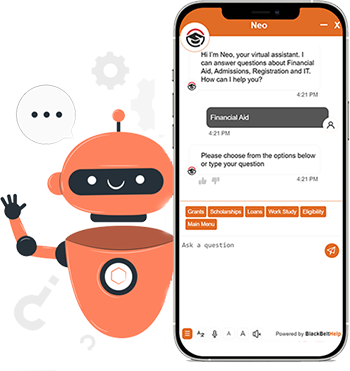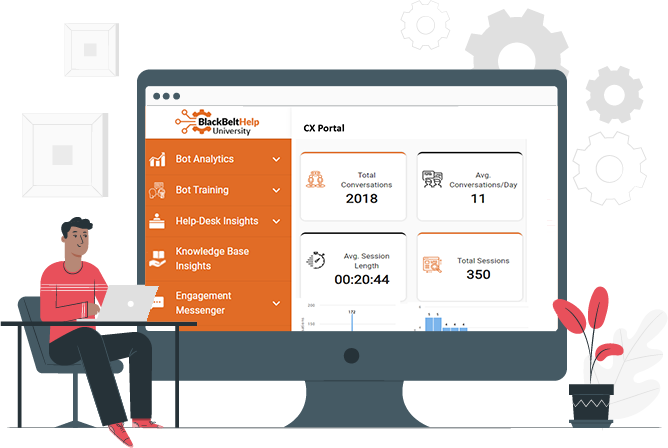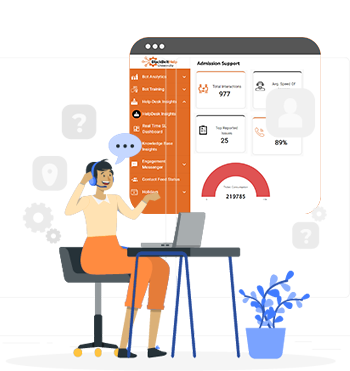How does AI-driven multimodal support help improve student success?

99.4% of 509 higher education institutions in the U.S. say that artificial intelligence (AI) in education and learning will be instrumental to their institution’s competitiveness in the next three years.
In the rapidly evolving landscape of education, student success is paramount. One notable shift is the increasing diversity of student populations, including a rise of non-traditional students, international students, and learners from diverse cultural and socioeconomic backgrounds. Additionally, there is a growing demand for flexible and online learning options, driven by advancements in technology and the need for lifelong learning. Students are also placing a greater emphasis on career readiness, seeking practical skills and experiential learning opportunities to enhance their employability. With the advent of social media and digital platforms, students have greater access to information and resources, fostering a more connected and collaborative learning environment.
All of this puts a lot of pressure on institutions – Institutions are continuously seeking innovative solutions to provide comprehensive and effective support for their diverse student populations. One such solution that is gaining prominence is AI-driven multimodal support. This cutting-edge technology combines the power of artificial intelligence (AI) and multiple communication modes to revolutionize the student support experience.
| Did you know: The AI education market is predicted to cross 20 billion USD by 2027. |
In this blog, we will explore how AI-driven support is shaping student success and transforming the educational landscape. But first let’s try to understand the factors responsible for this change:
Factors driving the popularity of AI-driven multimodal support in higher education
- Growing Student Expectations: First and foremost – there is a huge change in the way today’s students expect support. Especially in the current state of hybrid education, there are increased expectations for instant, personalized support. Students demand 24/7 accessibility, prompt responses, and tailored assistance, all of which AI-powered systems provide.
- Advancements in AI Technology: Advances in AI technology, including natural language processing and machine learning, enable sophisticated student support. AI systems understand inquiries, process data for personalized recommendations, and predict student needs with greater accuracy.
- Increasing Complexity of Support: The complexity of student support services necessitates AI’s intervention. AI automates administrative tasks, delivers personalized support, and analyzes data to identify at-risk students.
- Cost Efficiency and Resource Optimization: AI-powered solutions offer cost efficiency and resource optimization. Virtual assistants, chatbots, and automation technologies streamline support services, reducing human staff requirements and operational costs.
- Data-Driven Decision Making: Data-driven decision making is empowered by AI’s ability to analyze student data, identify patterns, and provide actionable insights. This enhances institutions’ understanding of student needs, enabling tailored support and strategic resource allocation.
Now that you understand the factors responsible for driving the adoption of AI-driven multimodal support, let’s discuss how it impacts students and institutions:
Impact of AI-powered multimodal support on student success:
- Personalized Assistance: AI-driven multimodal support systems are designed to provide personalized assistance to students. Through intelligent algorithms, these systems analyze vast amounts of student data, including academic records, preferences, and behavior patterns.
This data-driven approach enables the system to offer tailored recommendations, proactive alerts, and targeted resources, empowering students to make informed decisions and overcome academic challenges. - 24/7 Accessibility: One of the significant advantages of AI-driven multimodal support is its around-the-clock accessibility. These systems operate seamlessly day and night, ensuring that students have access to support services whenever they need them.
Whether it’s late-night studying, weekend assignment submissions, or urgent queries during holidays, students can rely on the continuous availability of AI-driven chatbots or support systems to provide prompt assistance, enhancing their learning experience and reducing stress levels. - Multimodal Communication: AI-driven multimodal support leverages various communication channels to interact with students effectively. These channels include chatbots, virtual assistants, voice-enabled interfaces, mobile applications, and web portals.
By offering multiple communication options, students can engage with the support system using their preferred mode, making the experience more convenient and user-friendly. Whether they choose to type their queries, speak to a virtual assistant, or access resources on their mobile devices, the multimodal approach ensures seamless connectivity and engagement. - Instant Responses: With AI-driven multimodal support, students no longer have to wait for long periods to receive responses to their queries. The intelligent algorithms behind these systems enable quick and accurate information retrieval, allowing students to receive instant responses to their questions.
This real-time support fosters a sense of efficiency, reliability, and engagement, enabling students to stay on track with their academic goals. - Support Diversity and Inclusion: AI-driven multimodal support systems are designed to be inclusive and support diversity among students. They can provide multilingual support, accommodating students whose first language may not be the language of instruction. Additionally, these systems can address the unique needs of students with disabilities by offering features such as screen readers, speech-to-text capabilities, and other accessibility options.
By fostering inclusivity, these systems create an environment where all students feel supported and empowered to succeed. - Data-Driven Insights: AI-driven multimodal support systems generate valuable data and insights that can inform institutional decision-making. By analyzing patterns and trends in student interactions, institutions can identify areas of improvement, fine-tune support services, and proactively address challenges faced by students.
The data-driven insights provide institutions with a deeper understanding of student needs, allowing them to implement targeted interventions and initiatives to enhance student success.
Needless to say – AI-driven multimodal support has emerged as a game-changer in the realm of student support services. By providing personalized assistance, around-the-clock accessibility, multimodal communication, instant responses, and supporting diversity and inclusion, these systems significantly contribute to student success.
Institutions that embrace this technology empower their students with the tools and resources needed to overcome obstacles, make informed decisions, and achieve their academic goals. As AI continues to advance, the potential for further enhancing student success through multimodal support is boundless, reshaping the future of education.










